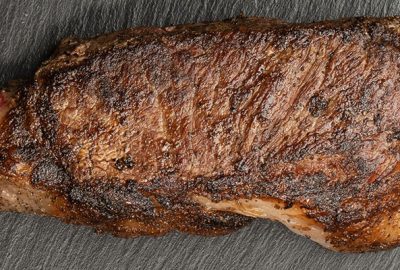Uncategorized
Where Do You Put the Meat Thermometer in a Turkey?
Cooking a turkey can feel overwhelming, especially if it’s your first time. You might be able to get away with guessing when a steak is done, but for a turkey, you’ll need an accurate meat thermometer both to ensure the perfect flavor/texture as well as general food safety. In this comprehensive guide, we’ll break down the process of cooking a delicious turkey using a meat thermometer, perfect for beginners.

Choosing the Right Meat Thermometer
For starters, you’ll need a reliable meat thermometer. You can find a traditional analog thermometer almost anywhere, but for best results, opt for a digital instant-read thermometer that offers rapid, precise readings.
So Where Do You Stick the Meat Thermometer in the Turkey?
Getting the right temperature is great, but you need to make sure that temperature is reached everywhere – leave no bird half-cooked. To do this, place your meat thermometer strategically in the thickest part of the turkey, where it takes the longest to cook. This ensures that all parts of the bird reach the desired temperature for safe consumption, while also preventing overcooking in thinner areas.
The thickest parts of a turkey are typically the inner thigh and the deepest part of the breast. These areas require the most cooking time to reach the recommended internal temperature of 165°F (75°C) set by the USDA. By inserting the thermometer probe into these regions, you’re ensuring that the most critical areas of the turkey are adequately cooked.
One common mistake is inadvertently hitting bones or cavities with the thermometer probe. This can lead to inaccurate temperature readings, potentially resulting in undercooked or overcooked turkey. To avoid this, aim to insert the probe into the meaty portion of the thigh or breast, away from any bones or cavities. You’ll know you’ve hit one if you encounter blunt resistance when you stick your meat probe in. If this happens, simply readjust and press on.

Pro Tips for Precise Turkey Placement
Here are some general tips to help you achieve precise thermometer placement every time:
- Insert the Probe Parallel to the Surface: Position the thermometer probe parallel to the surface of the turkey to ensure it penetrates into the thickest part of the meat.
- Check Multiple Spots: For larger turkeys, consider taking temperature readings from multiple spots to ensure even cooking throughout the bird.
- Reposition if Necessary: If you encounter resistance or hit a bone while inserting the thermometer, gently reposition the probe to ensure it’s properly placed within the meat.
What’s the Ideal Internal Temperature for a Cooked Turkey?
To ensure both safety and flavor, the USDA recommends cooking turkey until it reaches an internal temperature of 165°F (75°C). This temperature kills harmful bacteria while maintaining juiciness and tenderness in the meat. By adhering to this guideline, you can confidently serve a perfectly cooked turkey every time. Check out Meathead’s internal meat temperature guide for a definitive list of internal temperatures for turkey, pork, fish and more.
Remember to monitor temperature variations within the turkey throughout the cooking process. If you encounter discrepancies in temperature readings, take multiple readings from different areas to ensure even cooking. Additionally, if your thermometer gives inconsistent readings, follow the manufacturer’s instructions to calibrate it accurately. This proactive approach ensures that your turkey cooks evenly and reaches the desired temperature safely.
Once your turkey reaches the recommended internal temperature, remove it from the oven and allow it to rest for at least 15-20 minutes before carving. Resting allows the juices to redistribute throughout the meat, resulting in a more flavorful and tender turkey.
Proper placement of your meat thermometer is a critical step in cooking a perfectly tender and juicy turkey. By targeting the thickest parts of the bird, avoiding bones and cavities, and following these pro tips, you can confidently monitor the temperature and ensure that your turkey is cooked to perfection every time. Now you’re well-equipped to impress your guests with a deliciously cooked turkey that’s both safe and flavorful.
Bon appétit!






Leave a reply